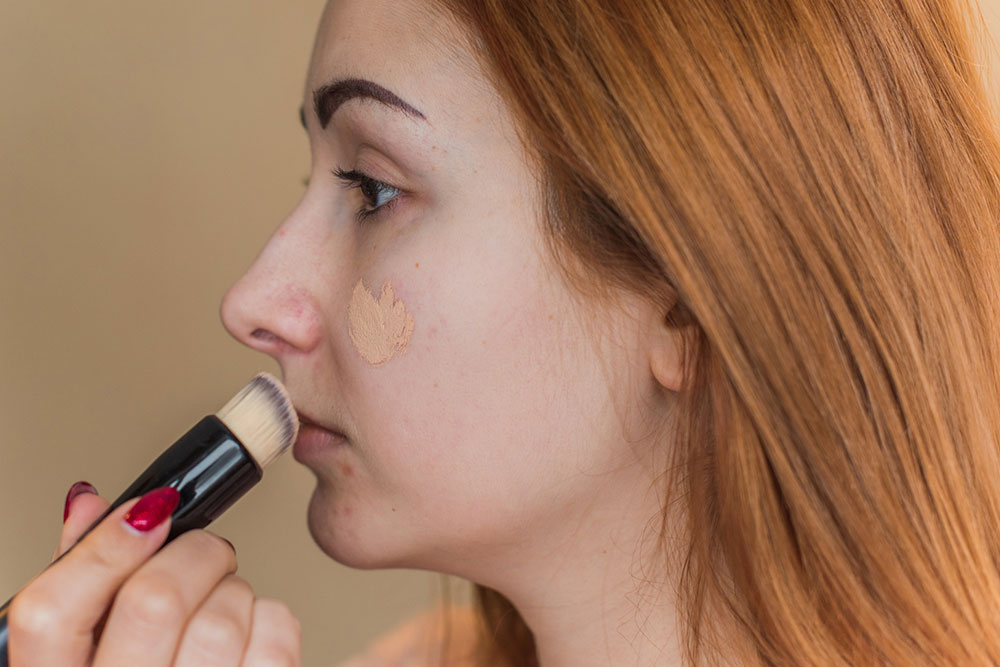7 concealer mistakes one needs to stop making

A concealer is one of the important parts of one’s makeup routine. When used correctly, it can give a flawless result by covering dark circles, hyperpigmentation, and acne scars. However, incorrect usage of concealer can also ruin one’s look altogether. Therefore, it is important to learn the correct technique of using the product and avoid certain common mistakes for a perfect result. That said, let’s look at some common concealer usage mistakes and how to fix them.
Not using enough moisturizer
Hydration is key when it comes to makeup, especially before layering anything onto the skin. Apply a sufficient amount of moisturizer and let it sit for a few minutes so that it gets absorbed into the skin. And only then start putting on the makeup. It’s called the prepping step and can be done not just before using foundation but before applying eyeshadow and even concealer. It is also important to use good eye cream and let it get absorbed into the skin before applying any makeup product.
Depending on how one’s skin feels on a given day, one can also do a quick exfoliation routine and then add hydration before putting on the concealer.
Using concealer before foundation
This is a rookie mistake that many make while applying makeup. It is always recommended to apply a light layer of foundation first and then apply the concealer. One can also do a spot treatment wherever needed, depending on how the skin is looking that day. If the concealer is put before the foundation, it will likely get rubbed off when the foundation is used. However, if one is using a powder foundation, it is recommended to use a concealer before applying the dry foundation.
Using the same concealer
Not everyone has too many concealer options, but keeping a couple of options in the makeup bag can help one achieve better results. Here are some suggestions – a peach-toned concealer with light reflective properties is the best product to help even out the blue undertones of dark circles. Similarly, when it comes to acne, the concealer should have a thicker consistency and match the skin tone so that it helps blend properly. For regular under-eyes, one can use a concealer that is light and fluid in consistency and texture. This is so that the concealer does not lead to crinkled-up fine lines under the eyes or around them.
Using too much of the product
Applying a lot of concealer is not the solution to hide those dark circles. In fact, it leads to a cakey and unnatural look, which even draws attention to the fine lines. If one thinks the dark circles are too much, one can try using a color corrector under the foundation, which might help. For example, a peach or salmon color corrector will help minimize the blue undertones in the dark circle. This way, one won’t have to cover it up with a thick layer of concealer and just use it to keep the skin tone even everywhere.
Using the wrong brush
Every step in the makeup routine has a dedicated brush to help spread the product properly. This applies to the concealer as well. While some people simply use their fingers to spread the products, like foundation or even blush and highlighter, using the right brush can help spread the product evenly without disturbing the layer underneath. When it comes to spot treatment, one can use a narrow brush, which can be used to simply blot. It does not create a concealer circle around the area while using, so it is easy to manage and blend in. Also, the trick is to pat the concealer on the spot instead of brushing it. This way, the coverage is directed towards the spot and does not need too many layers of concealer.
Not setting the concealer
Once the makeup is done, always add in the extra step of setting the makeup using a lightweight translucent powder. This helps prevent the foundation and concealer from disappearing through the day or shifting due to excess sebum production on the skin. However, one must be careful with the setting powder and lightly use it under the eyes and the blemishes.
If one has dry skin or flaky blemishes, it is usually advised to skip setting the makeup. The products will stay on for longer anyway, as there is less oil production in the skin, allowing the makeup to stay. Instead of using a powder, one can also try a setting spray, which can add some hydration to the look.
Not researching products
Concealer seems like a small part of the makeup, but it and the foundation make for the base of the makeup. It is vital to get these steps right because the rest of the makeup otherwise does not look as aesthetic as one might imagine or expect. Prepping the skin and applying these products need some research and guidance. Check for popular products available and how they react to the skin. One should try a few products and then make the right purchase that suits one’s skin and color the best.





